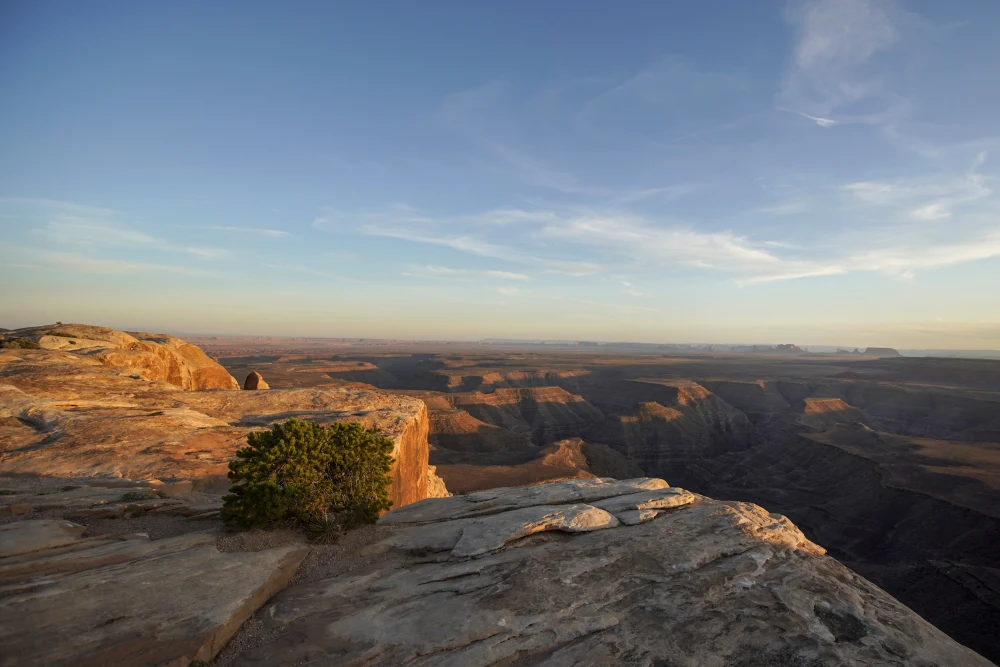Trump administration will consider redrawing boundaries of national monuments as part of energy push – Foxton News

WASHINGTON — As part of the Trump administration’s initiative to boost U.S. energy production, federal officials will review and potentially redraw the boundaries of national monuments established by previous presidents to protect significant landscapes and cultural resources.
This review, outlined in an order from Interior Secretary Doug Burgum on Monday, has raised concerns among conservation groups that President Donald Trump may seek to reduce or eliminate protections for monuments created by his predecessors, including Democrat Joe Biden.
Burgum has given agency officials until February 18 to submit plans detailing how they will comply with the order.
Among the monuments most at risk are Bears Ears and Grand Staircase-Escalante National Monuments in Utah, where state officials opposed their establishment. Grand Staircase-Escalante contains significant coal reserves, while Bears Ears is rich in uranium.
During his first term, Trump reduced the size of both monuments, calling them a “massive land grab,” and also lifted fishing restrictions within a large marine monument off the New England coast. Biden later restored protections for all three sites.
The question of whether Trump has the legal authority to alter the boundaries of existing monuments remains uncertain and is the subject of ongoing legal proceedings.

“This is a sneaky, unpatriotic attack that strikes at the very foundation of the country’s cherished public lands, including national parks and monuments. These national treasures are broadly beloved,” said a coalition of national monument advocates in a statement on Tuesday. The group, which includes business owners, environmentalists, and outdoor recreation supporters, stressed the importance of national monuments in preserving water, wildlife, trails, and culturally and geographically significant sites.
The Utah monuments cover more than 3.2 million acres, an area nearly the size of Connecticut. They were designated under the Antiquities Act of 1906, a law that grants presidents the authority to protect historic, significant, or culturally important sites.
The Supreme Court has affirmed the president’s power to create national monuments, and both Democratic and Republican presidents, including Trump, have used the Antiquities Act.
Officials from the Interior Department declined to comment on whether any specific monuments would be targeted, emphasizing that no decisions have been made. Burgum did not mention any specific monuments in his order but referenced the relevant federal statute linked to the 1906 law.
Utah’s Republican governor expressed support last month for further reducing the size of Bears Ears National Monument. Gov. Spencer Cox praised Doug Burgum’s appointment to lead the Interior Department, calling it “probably the single best decision that Donald Trump has made.”
Burgum issued the order as part of a series of directives on energy, marking the start of his leadership at the Interior Department, which manages over 500 million acres of public lands, including more than 400 national parks and 560 national wildlife refuges. He also moved to reverse a broad set of regulatory restrictions on the oil, coal, and gas industries that were put in place during Biden’s administration.
“We are committed to working collaboratively to unlock America’s full potential in energy dominance and economic development to make life more affordable for every American family while showing the world the power of America’s natural resources and innovation,” Burgum stated.
At the heart of these actions is the Trump administration’s belief that the U.S. is facing a “national energy emergency,” despite record domestic oil production.
The oil industry has voiced strong support for Burgum’s actions. “American energy leadership is back,” said Erik Milito, president of the National Ocean Industries Association.
However, the declaration of an energy emergency has faced criticism from Democrats and environmentalists.
“If they are going to say there’s some energy emergency that overrides the Antiquities Act, they are going to get laughed out of court,” said Aaron Weiss of the Center for Western Priorities. He pointed out that litigation challenging Trump’s previous reductions to national monuments remained unresolved when Biden restored protections.
Activists emphasize that the monuments under review have widespread local support, with communities and businesses that worked for years to secure their protection.
In recent years, Biden also designated new national monuments in Nevada and Arizona, areas that hold cultural significance for tribes tied to the region. Republican Nevada Gov. Joe Lombardo expressed frustration, claiming the White House did not consult his administration, effectively hindering clean energy projects and other developments in the state.



